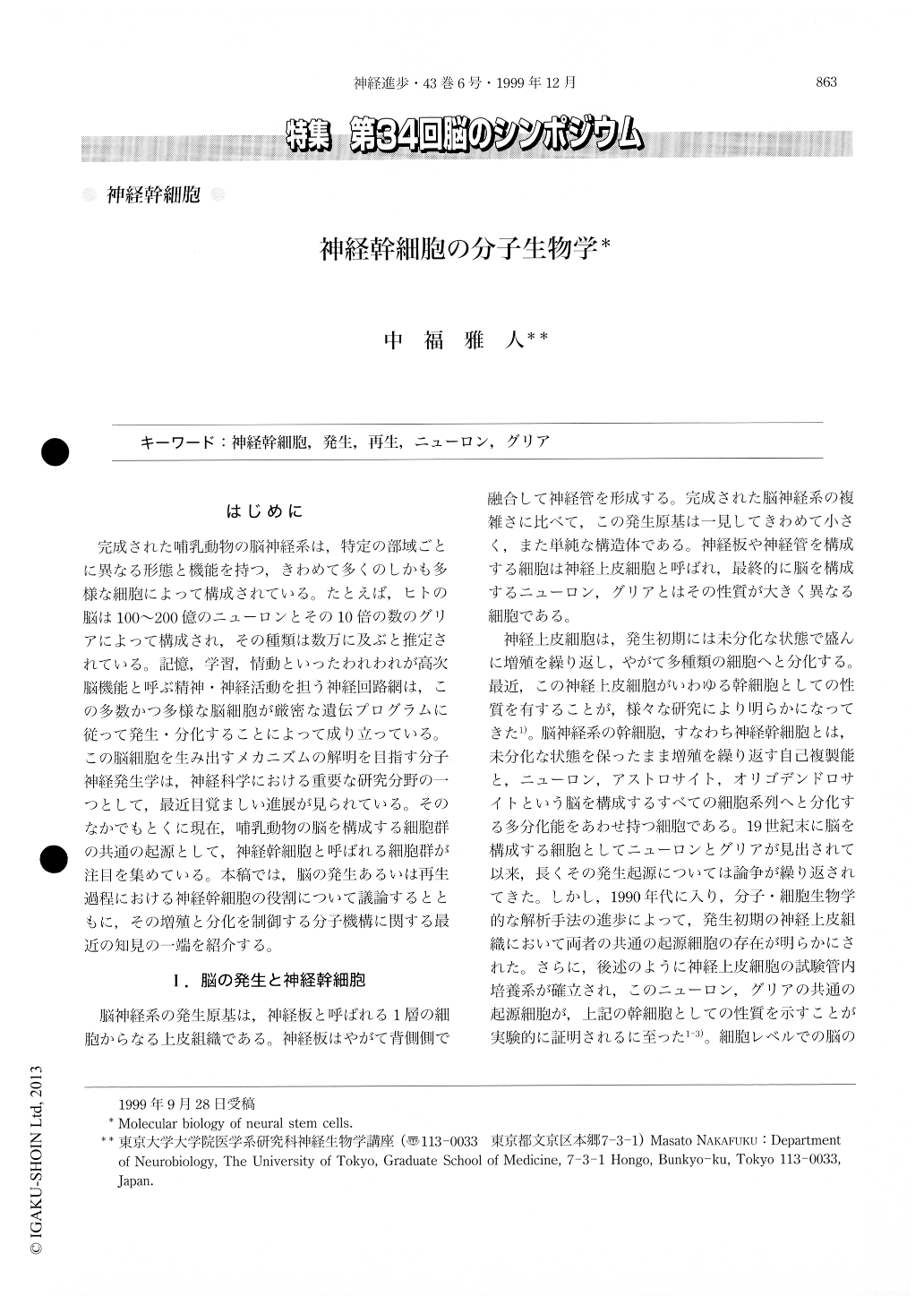Japanese
English
- 有料閲覧
- Abstract 文献概要
- 1ページ目 Look Inside
はじめに
完成された哺乳動物の脳神経系は,特定の部域ごとに異なる形態と機能を持つ,きわめて多くのしかも多様な細胞によって構成されている。たとえば,ヒトの脳は100~200億のニューロンとその10倍の数のグリアによって構成され,その種類は数万に及ぶと推定されている。記憶,学習,情動といったわれわれが高次脳機能と呼ぶ精神・神経活動を担う神経回路網は,この多数かつ多様な脳細胞が厳密な遺伝プログラムに従って発生・分化することによって成り立っている。この脳細胞を生み出すメカニズムの解明を目指す分子神経発生学は,神経科学における重要な研究分野の一つとして,最近目覚ましい進展が見られている。そのなかでもとくに現在,哺乳動物の脳を構成する細胞群の共通の起源として,神経幹細胞と呼ばれる細胞群が注目を集めている。本稿では,脳の発生あるいは再生過程における神経幹細胞の役割について議論するとともに,その増殖と分化を制御する分子機構に関する最近の知見の一端を紹介する。
Multipotential neural stem cells serve as the origin of diverse cell types during genesis of the mammalian central nervous system(CNS). During early development, stem cells continue proliferation and increase their total cell numbers without overt differentiation. At subsequent stages, the cells withdraw from this self-renewal mode and begin to commit to generating both neurons and glia. This lineage commitment proceeds with distinct kinetics and manner among different areas of the brain, finally contributing to the highly organized and complex morphogenesis of the CNS.

Copyright © 1999, Igaku-Shoin Ltd. All rights reserved.


